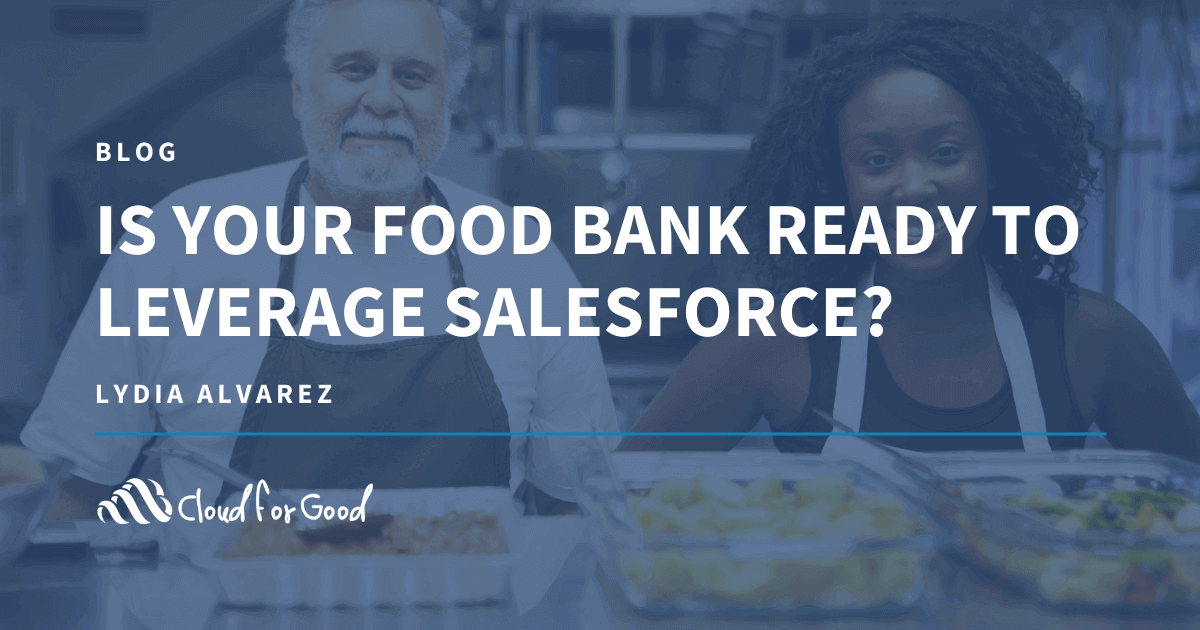The Hunger Problem
In America, 1 in 6 individuals struggle to put food on their tables. This isn’t because we’re facing a lack of food, but because underemployment, stagnant wages and rising costs of living continue to be prevalent. In fact, more than 46 million people still turn to the Feeding America network, which contains over 200 food banks and 60,000 food pantries and meal programs, each year for extra support.
Fighting for Hunger Relief
Food banks help ensure dignified and safe food service, managing membership compliance, provide nutrition education, helping clients access federal benefits, and so much more. But many food banks face operational challenges when it comes to raising funds, managing volunteers, distributing food while simultaneously managing a distribution network of pantries, soup kitchens, domestic violence shelters and after-school programs. Each of these efforts requires an incredible amount of data to track, monitor, and report on. Accessing accurate data, quickly and efficiently, requires a technology platform that can scale and grow as your food bank evolves.
Who Does Your Food Bank Depend on or Serve?
| Resource Constituents | Mission Constituents |
| · Board Members
· Individual Donors · Corporate Partners · Foundations · Food Vendors · Food Donors · Volunteers (time = money, right?) · Government Funders |
· Member Agencies
· Direct Service Clients · Government Policy Partners · Programming Partners
|
Can a Customer Relationship Management (CRM) Tool Help Your Food Bank More Effectively Serve?
Ask yourself the following questions:
- Can your food resource team, who solicits food donations, record their calls or visits with potential donors while they’re on the go? And can they quickly see those who volunteered at your Food Bank last year?
- Do you have complete visibility into your multiple conversations with member agencies from your food bank?
- Can you see how many unique individuals were served by your mobile pantry? And can you assess if they’ve ever been served by your food pantry or benefits assistance team in the past?
- Are you able to identify what other services your member agencies offer besides food?
- Are you easily able to see that one of your member agencies’ site visits last year reported three full-time staff, but this year they only reported one – possibly indicating a shift in their capacity to serve?
- Do you know if a volunteer who coming tomorrow to serve with their company has been a direct donor of your food bank last year?
- Are you able to harness and engage the incredibly valuable volunteers to move to the next stage of becoming a sustained donor?
If you answered no to any of these questions, then you may want to consider a more connected CRM like Salesforce. Salesforce can help food banks see the full picture, 360-degree view, of everyone you partner with and serve, including tracking all touch points with your constituents to ensure coordinated communication (calls, emails, email campaign blasts, direct mail campaigns, event invites, etc). Salesforce can also help you track all your key metrics like donations, people served, volunteer hours, event attendance, etc.
Additionally, the Salesforce App Exchange and the open API flexibility of Salesforce allows best in class products to be easily integrated, allowing you to keep using external applications that you’re comfortable with, while maintaining a single hub for your data.
You may also be interested in reading:





